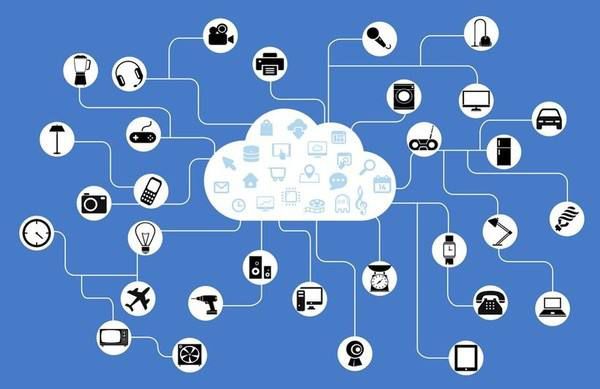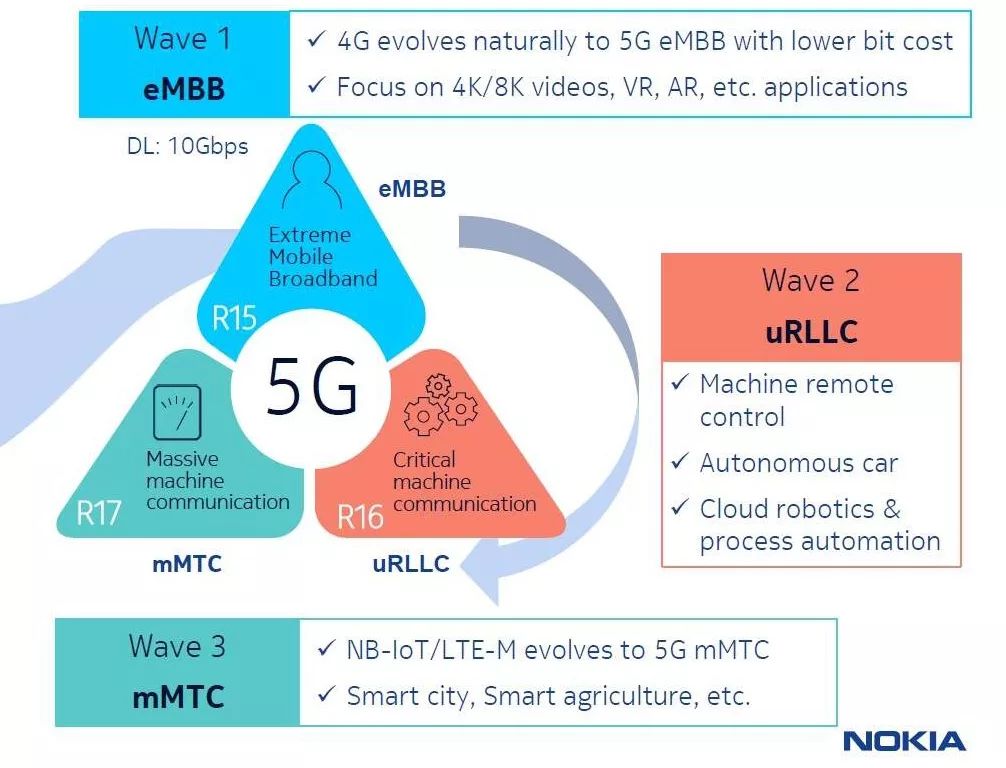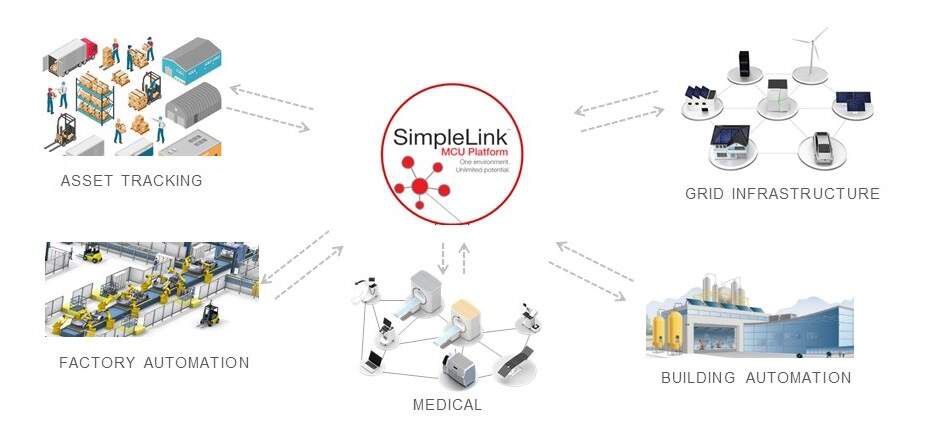

No one can deny that a significant part of the convenience of urban life comes from the support of wireless networks; modern people’s lives depend on WiFi.
As for smart cities, automated factories, the Internet of Vehicles, AIoT… these cool concepts and terms cannot truly enter the industry without reliance on communication networks.
Ultimately, the hope for intelligent living still relies on the next-generation communication networks. Over the past year, we have heard this term frequently, but what exactly does “next-generation communication” look like, and how will it disrupt and reshape networks? Most people must be somewhat ambiguous about this.
At the same time, more questions are brewing: What are the weaknesses of the WiFi we take for granted? Will 5G be the breakthrough for the Internet of Everything? What kind of network does AIoT actually need? Today, let’s try to open our minds…

The Former Kings: Why WiFi and NB-IoT Were Not Selected?
Before this, it is necessary to answer a question: What is the core logic of IoT communication? This question is not difficult; it is about connecting various edge devices (especially various sensors) to the Internet.
There are many protocols and solutions used, such as Bluetooth, Zigbee, Z-Wave, and WiFi for short-distance transmission, and NB-IoT, LoRa, Sigfox for long-distance. Our familiar wired networks, such as Ethernet and fiber optic networks, are also not uncommon.
One of the most common technologies is NB-IoT. With the gradual phasing out of 2G network signals, the advantages of the NB-IoT solution in terms of power consumption and price have become increasingly prominent. Since the standard was frozen in 2016, NB-IoT successfully achieved large-scale commercial use in just three years. By mid-2019, there were already 14 NB-IoT chip manufacturers in China, and the number of application terminal companies exceeded 1,000, making it the dominant technology in IoT applications.
Of course, WiFi is also not to be outdone. As the only protocol capable of providing high-speed data transmission, it has always been the main network in homes and offices due to its high performance and low latency. In the new era, WiFi has also been assigned new missions, such as applications in radar systems and dual authentication systems. According to Gartner’s prediction, the shipment of WiFi chips will exceed 1.5 billion units in 2020.

So why are these two unable to take on the responsibility of “next-generation networks”? There are mainly three limitations:
1. Cloud-network integration. More and more IoT devices need to connect to various cloud platforms, but the end-to-end solutions from edge to cloud require extensive on-site testing and support efforts in collaboration with operators. Most NB-IoT manufacturers have limited R&D capabilities, making them prone to issues like concurrent delays and low data upload success rates.
2. Synergy. Another characteristic of intelligent interconnection is vertical industrialization, which means that service providers need to meet the differentiated needs of different industry application manufacturers. Therefore, a single communication technology cannot meet the application needs of IoT. However, in the industrial field that needs to be intelligent, both NB-IoT and WiFi have relatively limited capabilities. WiFi has a range of only about 200 meters and operates at a frequency of 2.4-5 Hz, which means it cannot penetrate certain special structures. Industrial production requires a combination of short-distance, long-distance, and wired communication technologies to establish a smooth IoT network, making the application of a single technology clearly insufficient.
3. Cost-effectiveness. Another reason limiting the large-scale application of WiFi is cost. In industrial fields, the devices that need to be connected are often high-density, low-cost devices, such as water level sensors in pumping stations, rain sensors in cities, or meteorological sensors. Their scalability and constant online presence mean that every bit of power consumption is a cost, and the connection of WiFi consumes a lot of electricity, becoming an unbearable burden for enterprises.
In summary, the era of controlling individual microcontrollers to handle communication protocols with a single communication technology is becoming a thing of the past.
As Mixing Becomes Trendy:
The “Lego” Prototype of Next-Gen Networks
When it comes to the Internet of Things, one cannot help but encounter a “frequent topic”—What about 5G? Aren’t you talking about 5G?
Indeed, the ambition given to the 5G communication network by the market is substantial, especially in supporting massive machine-to-machine communication (M2M). Isn’t it the chosen one to save the network?
Unfortunately, such expectations may still take time to realize:
First, 5G only began deployment in 2019, and even at the “Chinese speed,” it will take three to five years to mature. For large venues such as factories and airports that require cost-effective networks, it can serve as a supplementary solution to WiFi, providing reliable instant communication or being applied in fields that require high real-time performance, such as the Internet of Vehicles and drones. However, widespread rollout is still quite distant.
Additionally, the large-scale application of 5G requires unified technical standards to support it. Currently, 3GPP is accelerating the formulation of relevant specifications. For example, the Release 16 aimed at low-latency industrial applications is expected to freeze the relevant specification details next year, at which point chip manufacturers can conveniently conduct product development, and it will be another year or two before that happens.

(5G Development Roadmap)
So, where should industrial IoT go? The answer may lie in Lego blocks.
Building a complete Lego structure requires many different components. Similarly, a composite IoT network also accommodates more diverse needs, such as needing to check and control IoT devices via a mobile phone, which requires Bluetooth; to transmit factory equipment, Ethernet cannot be retired; and for some low-latency requirements, high-speed 5G is needed. In addition, technologies like WiFi, fiber optics, and xDSL each have their advantages. A complete next-generation “IoT network” must stack multiple wireless technologies in a single chip to meet market demands.
This also poses new challenges for the R&D and creativity of terminal manufacturers.
Because different chip suppliers have different software and development tools, terminal device manufacturers must integrate different technologies into their products based on these varied development environments, which will undoubtedly significantly affect the original interview speed of the products.
Since IoT terminal products are often customized and produced in small batches, upstream manufacturers that can integrate development software ecosystems to help terminal manufacturers quickly navigate the pains of network upgrades will have a competitive advantage in attracting more developers and ushering in a rapidly growing lifecycle and growth opportunities.

A successful Lego structure must also have a tight, complete, and sturdy load-bearing structure to ensure its stability. Reflecting on the IoT network, the interweaving of multiple systems and communication technologies, combined with the density of data transmission, will create countless potential “attack points,” leading to concerns and worries about network security. Therefore, the deployment of IoT networks must also be considered from the perspective of the entire ecosystem. In addition to self-protection of chips, the establishment of secure channels, and the construction of certification systems, it may even need to consider political risks to achieve relative IoT security.
Comprehensive Disruption: The Industrial Treasure Mine of Next-Gen Industrial Communications
From the previous trends, perceptive friends have likely already spotted many business opportunities in the industry. For example, integrated IoT chips, unified IoT development platforms, etc., but these high-tech threshold opportunities are often the domain of upstream players in the industry chain.
For many small and medium-sized service providers, in which areas can they take off by leveraging this wave of communication disruption?
Currently, there are three changes worth noting:
1. Real-time network industrial applications. The application of the new generation of networks means a shift from stored and forwarded information flow to real-time information flow. Therefore, industrial IoT is rapidly developing towards a predictable, real-time, high-bandwidth network, making the transmission of high-definition data possible. This further opens up the imagination of image and audio interactive technologies in industrial scenarios, turning remote assistance and real-time response visual operations into reality.

2. Substantial changes in the Internet of Vehicles. Whether it is vehicles equipped with autonomous driving modules or unmanned vehicle technologies moving towards full automation, the complexity of automotive control systems has become a fact. Both the vehicle’s communication system and in-car entertainment networks require low latency, real-time transmission, and high security to ensure unified management. Composite systems will ensure stable data exchange, thereby re-establishing safety standards for the Internet of Vehicles.
3. Management services in industrial IoT. Changes in communication methods will also shift IoT management from being device-oriented to strategy-oriented. This requires IoT networks to be sufficiently intelligent, capable of providing advanced embedded management tools to different B-end users, and able to continuously perform fault diagnosis, performance monitoring, and automated fault handling. Cloud service providers that can achieve “zero management” first will have the best chance to tap into the rich mine of enterprise-level services.
Overall, the “next-generation communication network” has never been the exclusive domain of any one technology; it will be synonymous with simplification, efficiency, and security, subtly disrupting various existences we have long taken for granted. What branches it will sprout in the spring rain of the new year is something we can all look forward to.



